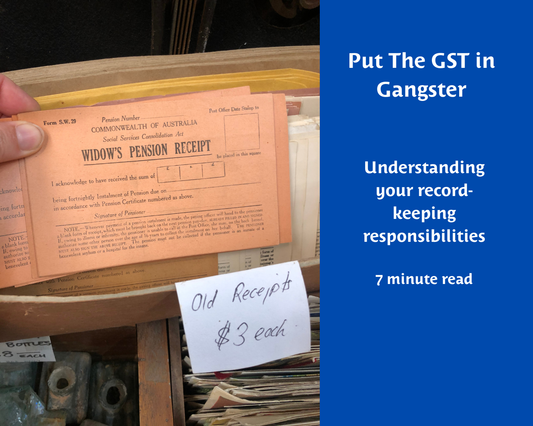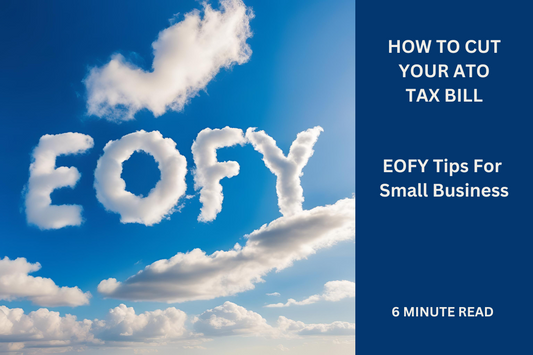Taking Charge Of Your Superannuation
Are you self employed as a sole trader? Do you have a side hustle that complements the income you earn from an employer? Are you a non-salaried partner or director? Yes?! Then how much are you putting aside for your super?
If you haven't been making super payments for yourself, you’re not alone. It’s quite common for people who are self employed to overlook or opt out of superannuation. The Association Of Superannuation Funds Of Australia (ASFA) Pre-Budget Submission for the 2022-23 Budget stated that 20% of self employed people have no super at all!
This is largely because, if you’re self employed, it's not mandatory to pay yourself super. Any contribution you make is by choice and is classed as a 'personal contribution'. The only exception to this rule is if you’re employed by your business under a traditional PAYG setup. For example: You’re a director and you draw a wage from your own company.
However, there are definite benefits to making personal contributions to your super:
- You’re building a nest egg for, or avoiding poverty in, your retirement
- Super investments usually get better returns than bank savings accounts
- You may save on tax
Let's look at the tax benefits, the fundamental choices to consider, and how to get your superannuation into super shape, in a way that suits you!
Contractors - Check Your Entitlements First
Even if you’re not on the payroll of a business, if you’re a contractor working for a business, you might still be eligible to be paid super by that business.
This is especially true for workers in performance and presentation roles - Musicians, actors, dancers, sportspeople, presenters, etc. For other roles, you need to review seven characteristics of your working relationship, as laid out by the ATO.
We’ve posted a whole, separate blog article with all the details, so please take a few minutes to read Super For Contractors to make sure you’re not missing out on your entitlements.
Select The Right Fund For You
Superannuation funds differ in their returns, risks, investment portfolios, insurances and fees. They might not be appetising reads, but digesting the information each one provides is worthwhile. You're making a consumer choice that will definitely impact you, so it's best not to be passive in this. Consider where you are in your life and what matters to you.
If ethics are important to you, look for funds that have ethical charters stating what they will and won't invest in. Having your money working to positively impact the world can be a form of financial activism. To evaluate portfolios and ethics, do a web search for 'ethical super funds'. You'll find articles and comparison sites. You can also consult individual funds' websites for their ethics policies.
If a financial outcome is your main focus, you’ll probably be more concerned about performance and fees. To compare these for different funds, you can use the ATO's YourSuper comparison tool.
If retirement is just around the corner, risks and fluctuations in performance could be important, since you don't have as much time for highs and lows to average out over decades. Consulting a financial advisor would be a good idea in this case.
These factors should be considered not only when you first choose a super fund, but on a regular basis. Check in with the superannuation market periodically and see if your money is in the best fund and investment category for you.
Review Incorporated Insurances
Some insurances are automatically put in place by super funds, such as income protection, life insurance, etc. They can prove very useful in times of crisis, but they can also incur premiums. If an insurance policy is not relevant to you, or if you're already covered by a similar policy elsewhere, it might not be prudent to have the premiums reducing the amount that is stacking up as actual super. You need to make a decision about whether to go with the built-in insurance policy or opt out. Whenever major life changes occur, we recommend that you reassess your insurance policies and update them as necessary.
Consolidate Your Accounts
Consolidate your super into one super fund account so that you're not paying multiple fees. If, before becoming self-employed, you opted for employers' default super funds, you might have a few accounts. Finding this 'lost' super is easy. You can do so through your myGov account, and refer to these searching for lost super instructions if you need help.
Make Regular Contributions
You don’t necessarily need to wait a whole year until you've saved up what seems like a significant contribution. A large amount building up in your savings account could be tempting to use for a treat, a big bill or even a business investment. Yes, they're all important, but future you is important too.
Making regular contributions is a good habit to foster. Small payments every month or quarter add up and can give you a sense of progress. They can also be more manageable, making less of a dent in your cash flow than a larger end of financial year payment.
Contribute An Amount That Works For You
As a guide, in FY 2024-25, employers are required to pay their employees 11.5% superannuation, and this will rise to 12% in 2025-26.
It's better to start with whatever you can afford though, rather than nothing. Remember, this is a positive action you are taking for yourself, and it will add up over time.
Conversely, if you're not restricted financially, just be aware that there are limits to how much you can contribute in each financial year, and tax rates applicable to certain thresholds (see next section).
Maximise Tax Benefits
The tax benefits to making personal super contributions depend on the thresholds into which they fall. These thresholds are changeable from year to year, but in FY 2024-25 they are as follows.
Please note: Before paying personal contributions into your fund, you need to formally notify your fund that you intend to claim a tax deduction and give them your Tax File Number (TFN).
Concessional Contributions
Contributions up to $30K are classed as 'concessional contributions'. Your super fund passes 15% of these contributions onto the ATO. Your personal Income Tax Return takes this into account. The deduction takes the form of you only paying 15% rather than the tax rate that would have been applicable on the contribution amounts if they had NOT been paid into your super fund.
Non-Concessional Contributions
Contributions above $30K are classed as 'non-concessional contributions'. They're taxed at higher rates. The cap on non-concessional contributions per annum is $120K.
Co-Contributions & The Low Income Super Tax Offset
There are two Australian Government initiatives to support low and middle income earners: The super co-contribution and the low income superannuation tax offset. They each have a maximum payment of $500. You don't need to apply for these. If your income makes you eligible, and your fund has your TFN, the ATO will pay the eligible amount into your fund account automatically.
The ATO's guide to personal super contributions provides finer details on how to claim a tax deduction, eligibility to do so, and an example of how the above thresholds and initiatives might impact your tax payable.
Please note, the advice provided above is general - We encourage you to consult with a financial planner or adviser on these matters. If you have any questions please don't hesitate to email us at help@countingclouds.com.au




